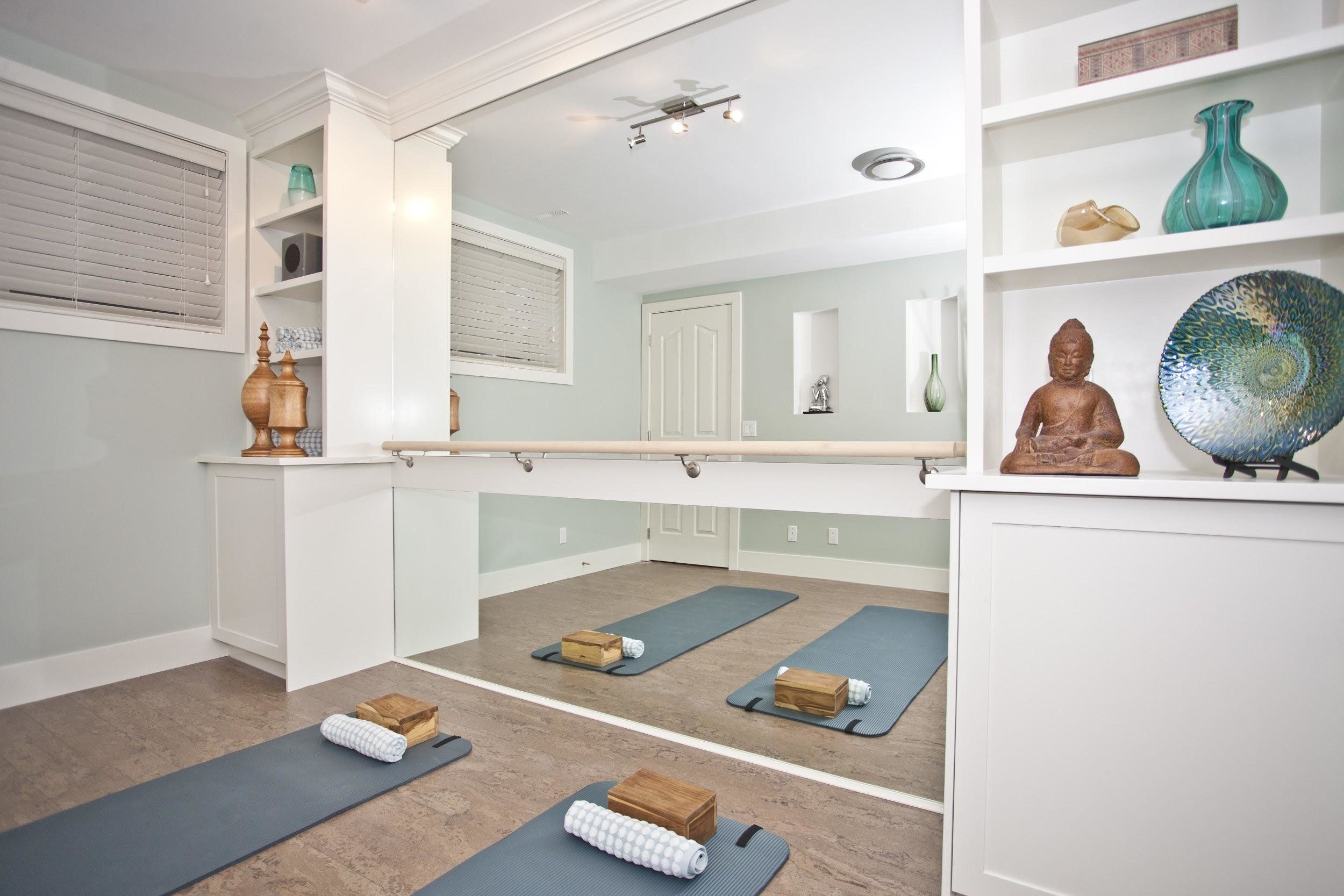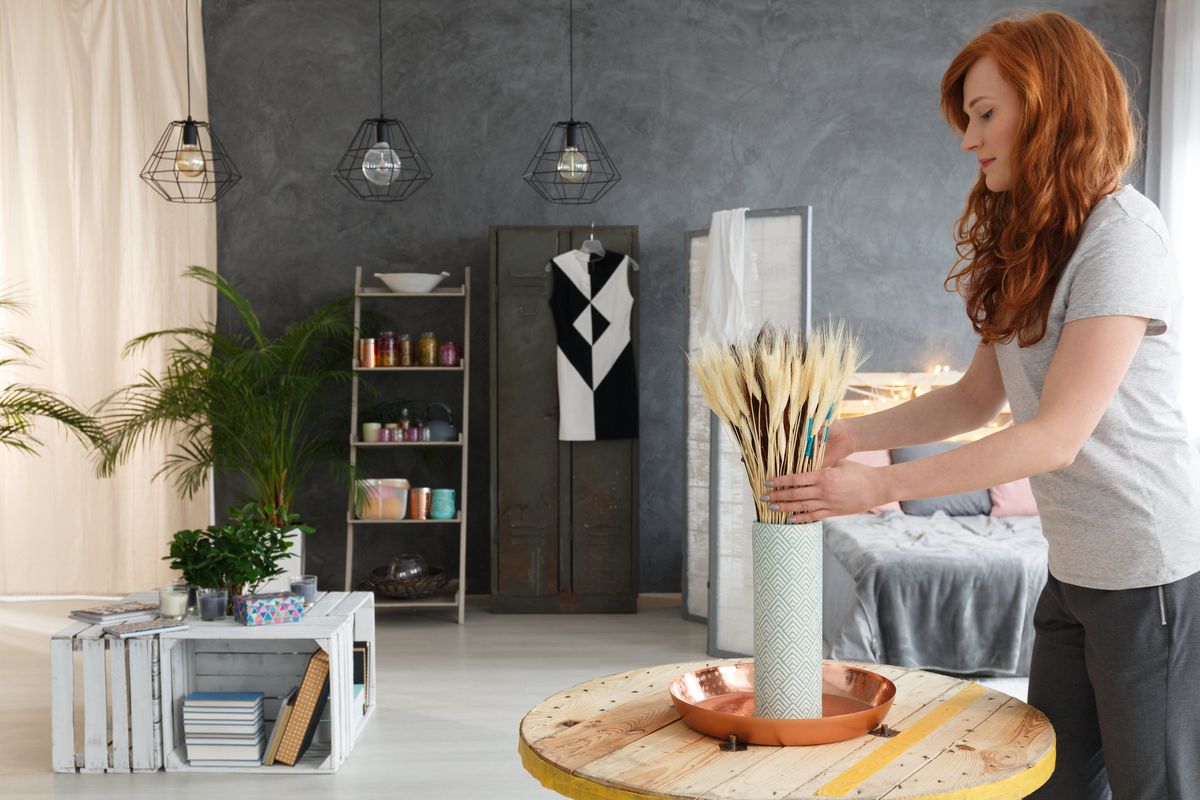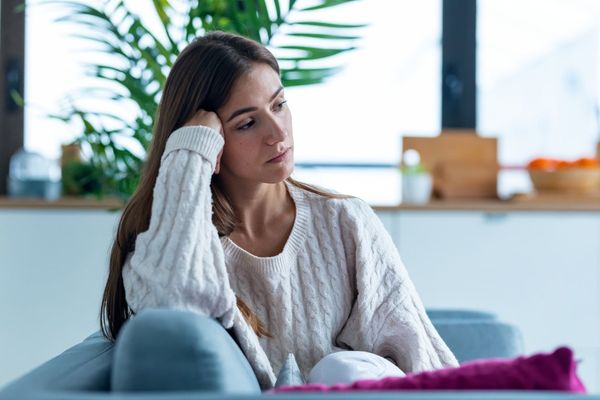The coffee table that doubles as my desk is layered with books, unopened mail and notebooks. There are piles of clothes all over the bedroom floor. The kitchen pantry's organization is nonexistent since we started grocery shopping once a month to limit our potential exposure to COVID-19. And my boyfriend and I are both working from home.
Every time I look at these scenes, I feel my anxiety rise before the depressive thoughts kick in: I am so overwhelmed, I don't know where to begin.
"When it comes to overall health and well-being, the various dimensions of wellness are interconnected," said Dr. Jessica Matthews, assistant professor and director of the Master of Kinesiology in Integrative Wellness program at Point Loma Nazarene University and a member of HealthyWomen's Women's Health Advisory Council, via email. "As such, our physical environment . . . can have an impact on our mental health, either positively or negatively."
A 2016 study found that natural light helps improve the mental health and overall attitude of employees. Anyone who works sitting under fluorescent lights can attest to that.
"Specifically, spending extensive time in environments with artificial light (to include excessive blue light from TVs, computers, smartphones, etc.) and little to no natural light can increase stress, disrupt circadian rhythm and negatively impact mood," Matthews wrote. "Conversely, exposure to natural light has been shown to increase serotonin levels, which can help to improve mood, create feelings of calm and also reduce depression and anxiety."
That's where wellness design comes in, which is, in simple terms, changing your living space to improve your mental and physical comfort. It's a topic Jamie Gold, author of Wellness by Design: A Room-by-Room Guide to Optimizing Your Home for Health, Fitness, and Happiness, has studied for more than a decade.
Gold has come up with five facets of wellness design: health and fitness, safety and security, accessibility, functionality, and comfort and joy.
"Looking at a few of these areas, a home with inadequate kitchen or bath ventilation is unsafe and lacks Wellness Design in those key rooms," Gold explained in an email. "A home without accommodation for someone with physical challenges isn't accessible for them and lacks Wellness Design in that regard. If a room makes you feel ill at ease — perhaps the lighting or paint color grate on you, or it's a constant clutter magnet — it isn't providing comfort or joy and lacks Wellness Design benefits too."

Yoga room by designer Ana Cummings. Photo courtesy of Ana Cummings. Photographer: Steve Dutchesen/Wellness By Design, Tiller Press. © J. Gold.
Baby steps
The benefits of wellness design are clear, but it can be hard to figure out where to start.
"I suggest looking at one room at a time — starting with either the most important for a particular need, like setting up a home office, for example, or with the easiest, if you just want to improve your space," Gold wrote. "As with any other area of getting healthy, you don't want to try to do everything at one time. It would be too hard to quit smoking, start a Keto program and take up a new sport all at once, and you'd likely fail at one or more."
Be sure to look at areas of your home that could impact your safety. In my case, that's cleaning up the piles of clothes in our bedroom so we can walk around without tripping. For others, it could mean creating a home fitness area, meditation space or ergonomic home office, or making sure your kitchen has enough space to prepare healthy meals.
"Consider your own vision of what a healthy life looks like and determine what enhancements you can make to your home to help you achieve and maintain it," Gold advised.
Wellness design during the pandemic
Due to COVID-19, more people than ever before are working remotely. That can make finding and maintaining a work/life balance even more difficult.
"We spend so much of our time in our homes generally, but even more so while we're turning them into workplaces, school rooms and gyms, that it's critical that they support, not sabotage, our health and well-being," Gold wrote.
This means creating designated areas for work that are separate from the places in your home where you relax.
"If you don't have additional rooms available, look for separators like screens or furniture configurations and layouts that let you visually and mentally 'leave work' at the end of the day," Gold suggested. "Your kids need separate, designated areas for their schoolwork and playtime, too."
Decluttering your space
"Excessive clutter can not only create a visual distraction, but it can also lead to feelings of stress . . . and anxiety," Matthews explained. "Taking time and care to declutter and organize your space can help to increase focus and improve productivity."
Don't underestimate the impact of natural light
"Integrating nature into one's living space can help to reduce stress and create a more tranquil space," Matthews wrote.
If you don't have a porch or balcony, buy some house plants, put up photographs of mountains, beaches or other outdoor scenes and choose window designs that allow for more natural light to stream through rooms.
A work in progress
Wellness design isn't always a one-and-done task.
"There are things you can do and maintain, like optimizing your bedroom for sleep, but there are also evolving needs, technology and challenges," Gold wrote.
This could be making sure you can still use your bathroom if you get injured and need to use crutches or a wheelchair or incorporating smart home systems to make independent living easier for older adults.
I'm starting by putting my work-related items in a box I can store away when the day is done.







